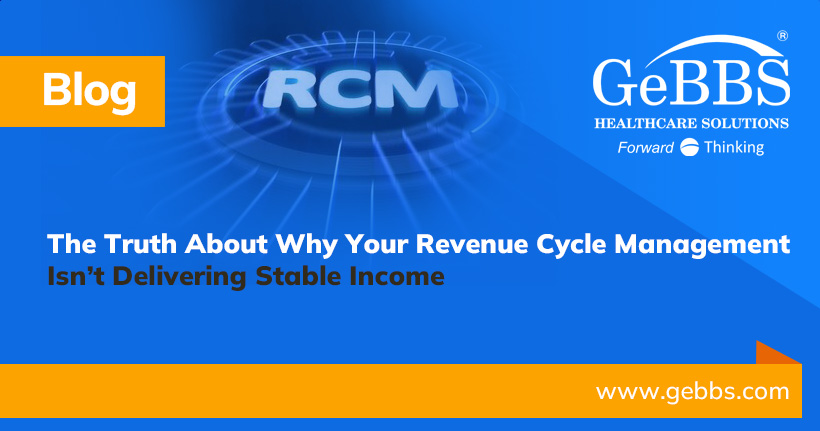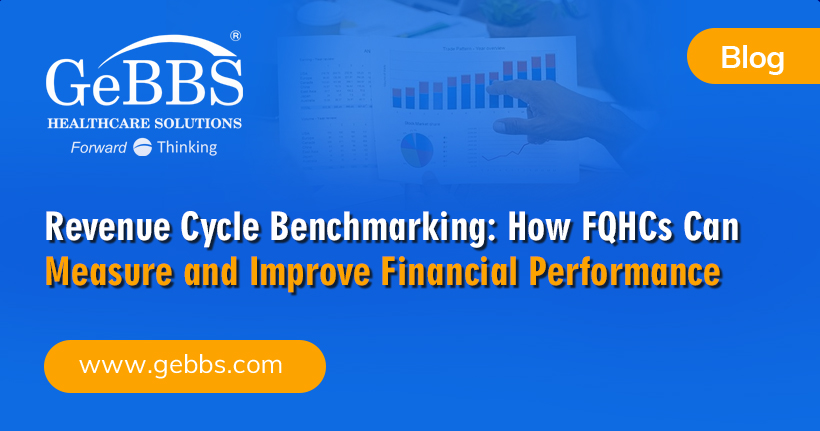The inconsistency is starting to wear on you. One month, your cash flow’s smooth sailing. The next, you’re bracing for impact—wondering how you’ll cover payroll or fund the next big initiative. It’s maddening, right?
Maybe you’ve run the reports, triple-checked your denial rates, and even tightened up collections. And yet…the peaks and valleys keep coming. How could this be possible after all the adjustments and late nights? You’re doing everything right, but your revenue cycle management still feels unsustainable.
The truth is, there’s a reason you keep finding yourself in this situation, and it’s probably not the one you think. But before we get to the root problem, let’s clear up some common assumptions first.
Presumed Culprits behind Unpredictable Cash Flow
When revenue swings wildly, it’s natural to look for the usual suspects. Payment delays from payers. A spike in denials. Staffing gaps that slow claims processing. These are real problems, and they absolutely deserve attention.
But the truth is, these revenue cycle management issues are often just symptoms. Even if you reduce denials, speed up payment posting, or fill vacancies, you can still end up with unpredictable cash flow. Why? Because fixing surface-level issues doesn’t address the deeper problem that’s driving the instability.
Think of it like patching leaks in a roof without realizing the foundation is shifting. The repairs help for a while, but the bigger structural issue keeps creating new cracks. The same thing happens when you focus only on these common revenue cycle pain points.
The real problem is often inherent in the way your revenue cycle is managed from the ground up.
The Real Reason for Revenue Instability
Most organizations lack a truly unified revenue cycle. Instead, they have separate functions—coding, billing, collections—each working in its own lane. Sometimes these teams are internal. Sometimes they’re split between multiple vendors.
The problem? Those lanes rarely merge into one clear road. Instead, they create bottlenecks and blind spots that leadership can’t see until the damage is done. In other words, the real issue here is fragmented, siloed revenue cycle management processes.
Imagine this scenario…the billing team is chasing down missing documentation, but the coding team doesn’t know it yet. Collections are working from outdated account statuses because they can’t see the most recent denial data. Everyone’s moving, but not in sync. The result? Different teams working from different data sets, KPIs that don’t match, and problems that hide in the gaps.
It’s not the people or even the individual processes that are causing the problem. It’s the structure itself. This structure makes it hard to spot where claims are getting stuck, or worse, quietly lost.
When there’s no shared visibility, no integrated workflow, and no single source of truth, leaders end up reacting to problems after the fact. By then, the revenue drop is already a foregone conclusion.
How This Undermines Your Revenue Cycle Management
While the operational headaches caused by a fragmented revenue cycle are no doubt painful, the resulting financial unpredictability is far worse.
It hits your cash flow first. When no one can see the entire claims journey in real time, it’s easy for accounts to sit idle. A claim might be missing one piece of information, but without visibility, it lingers in limbo. The longer it sits, the longer you wait to get paid.
Those blind spots often lead to missed revenue opportunities, like underpayments and overlooked charges. If your team or vendor doesn’t have the complete picture, these oversights can pass unnoticed. And every one of them chips away at your margins.
And while those gaps are draining your revenue, slow reaction times compound the damage. By the time leadership sees a problem—say, an uptick in denials or a slowdown in payment posting—it’s already weeks old. You read that correctly. While you thought you spotted a problem, in actuality you’re seeing its aftermath.
As you can probably tell by now, even if each piece of the revenue cycle is performing “well” in isolation, the whole system can still be unstable. That’s the hidden cost of fragmentation.
The Answer to Breaking the Cycle of Peaks and Valleys
Stability comes from visibility and coordination. When the revenue cycle is managed as a single, connected process, blind spots disappear and leaders can act before problems hit the bottom line. In other words, the answer is integrated, end-to-end revenue cycle management services. Here’s what that looks like:
Centralized Data & Reporting – One Source of Truth
Instead of each team tracking its own metrics, all performance data flows into a shared platform. That means billing, coding, collections, and leadership are all looking at the same numbers in real time.
Cross-Functional Workflows – Teams Working in Sync
When workflows are connected, a change in one step triggers visibility in the next. If coding flags missing documentation, billing sees it instantly. If collections spots an underpayment, that information flows back to contract management for correction.
Real-Time Analytics – Spotting Bottlenecks Before They Impact Revenue
With integrated analytics, you can see when claim turnaround times are slipping or payment posting lags. Instead of waiting for end-of-month reports, you can act in the moment—keeping cash flow steady.
Proactive Denial Prevention – Stopping Problems Before They Start
When processes are connected, you can catch the root cause of denials at the front end. Missing modifiers? Eligibility issues? They’re flagged and fixed before the claim goes out the door. That means fewer reworks, faster payments, and less wasted staff time.
Scalable Support – Flexibility When You Need It
Peak claim periods don’t have to slow you down. An integrated revenue cycle management partner can scale staffing up or down based on volume, so you’re never caught short-handed or overstaffed. That’s exactly what GeBBS delivers. Get in touch to learn how we can help.
At the end of the day, shifting to an integrated, end-to-end revenue cycle management services model breaks down silos and creates a culture of shared accountability. When everyone works from the same playbook, stability stops being a moving target and becomes the norm.
Stabilize Your Revenue Cycle Management Today
The months of uncertainty don’t have to define your operation. Imagine opening your dashboard on the first of the month and seeing a clear, consistent pipeline—claims moving, payments posting, revenue flowing exactly as projected. This is the new standard.
Your teams work in sync, sharing the same data and addressing issues before they snowball. Conversations with leadership shift from damage control to strategy. The peaks and valleys that were once the hallmark of your day-to-day have flattened into a steady, reliable rhythm. You can finally breathe a sigh of relief.
While you may feel like you’ve gotten lucky, the truth is anything but. This new era of predictability was a conscious choice. It’s the result of an integrated, transparent revenue cycle that gives you control over the future. And that future is entirely within reach.If the ups and downs of your revenue cycle are wearing you out, GeBBS can help bring you back to solid ground. Our integrated revenue cycle management services give you one clear picture of your operations. We work behind the scenes to keep claims moving, prevent denials before they happen, and make your revenue flow more stable, month after month. With GeBBS, you don’t have to wonder what next month will bring. Predictable cash flow is now the status quo. Contact us today to learn more.






